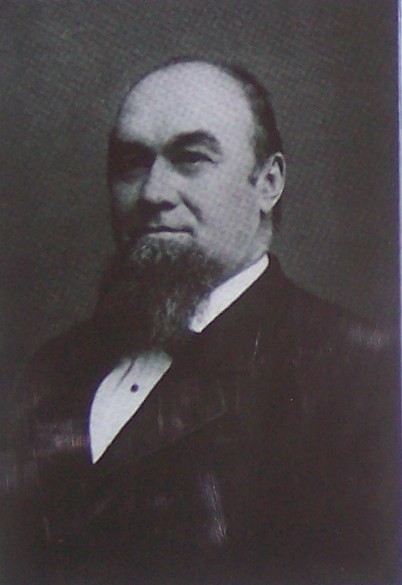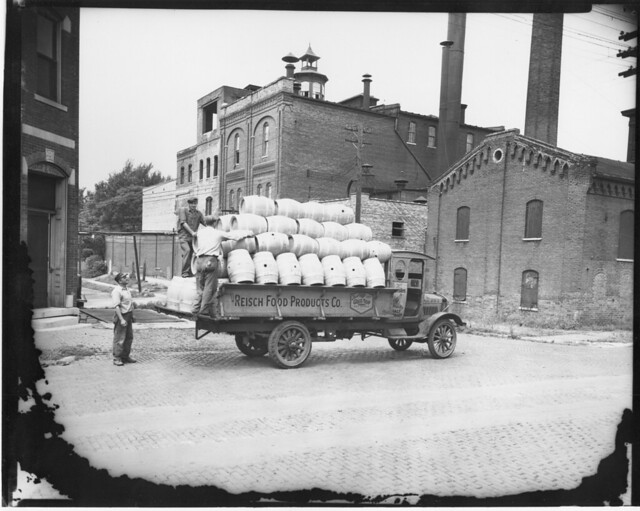
Wednesday’s ad is for “Rheingold Beer,” from 1963. This ad was made for the Rheingold Brewery, which was founded by the Liebmann family in 1883 in New York, New York. At its peak, it sold 35% of all the beer in New York state. In 1963, the family sold the brewery and in was shut down in 1976. In 1940, Philip Liebmann, great-grandson of the founder, Samuel Liebmann, started the “Miss Rheingold” pageant as the centerpiece of its marketing campaign. Beer drinkers voted each year on the young lady who would be featured as Miss Rheingold in advertisements. In the 1940s and 1950s in New York, “the selection of Miss Rheingold was as highly anticipated as the race for the White House.” The winning model was then featured in at least twelve monthly advertisements for the brewery, beginning in 1940 and ending in 1965. Beginning in 1941, the selection of next year’s Miss Rheingold was instituted and became wildly popular in the New York Area and beyond. In 1963, Loretta Ann Rissell was chosen as Miss Rheingold 1963. She was born November 1, 1940 in Honolulu, Hawaii, but grew up mostly in Southern California, at least until her father Harold passed away when she was eight. Her mother Mary remarried a dentist, Walter Giza, and relocated the family to Philadelphia, Pennsylvania, where she attended Northeast High School. She began modeling after high school, winning the crown of Miss Philadelphia of 1961, along with being named Miss United Fund Torch of Philadelphia and St. Joseph’s College Prom Queen. Rissell used her year as Miss Rheingold to springboard her into a modeling career. Rissell later married someone named David R. Zatzman, and both appear to still be alive and either living in Rutherford, New Jersey at least from the 1970s and possibly later in Florida, although it’s also possible they are snowbirds and split their time. In this ad, from April, Loretta Ann Rissell, Miss Rheingold 1963, is shown standing on a dock, about to make a delivery to the fishing trawler “Liberty Belle” in Provincetown, which is Massachusetts, at the tip of Cape Cod. But according to the text, delivering that case of beer is making her a little “salty.”




















































 Just before taking the stage during GABF 2007, from left, Glenn Payne (of Meantime Brewing), Charlie, Mark Dorber (formerly of the White Horse on Parson’s Green but now at the Anchor Pub), Garrett Oliver, and Steve Hindy (both from Brooklyn Brewing), Dave Alexander (from the Brickskeller), and Tom Dalldorf (from the Celebrator Beer News).
Just before taking the stage during GABF 2007, from left, Glenn Payne (of Meantime Brewing), Charlie, Mark Dorber (formerly of the White Horse on Parson’s Green but now at the Anchor Pub), Garrett Oliver, and Steve Hindy (both from Brooklyn Brewing), Dave Alexander (from the Brickskeller), and Tom Dalldorf (from the Celebrator Beer News). Some NBWA luminaries at the 2008 NBWA welcome reception. From left, Jamie Jurado (with Gambrinus), Lucy Saunders (the Beer Cook), Charlie Papazian (President of the Brewers Association), Kim Jordan (from New Belgium Brewing) and Tom Dalldorf (from the Celebrator Beer News).
Some NBWA luminaries at the 2008 NBWA welcome reception. From left, Jamie Jurado (with Gambrinus), Lucy Saunders (the Beer Cook), Charlie Papazian (President of the Brewers Association), Kim Jordan (from New Belgium Brewing) and Tom Dalldorf (from the Celebrator Beer News). Charlie with Pete Slosberg at the Craft Brewers Conference in San Francisco a few years ago.
Charlie with Pete Slosberg at the Craft Brewers Conference in San Francisco a few years ago.





